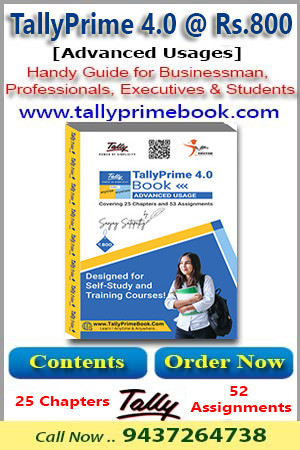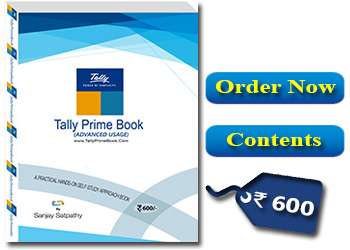Features towards Tax Incidence on Self-Occupied House Property :
-
A property occupied for own business purposes -
Where an assessee uses his property for carrying on any business or profession, no income is chargeable to tax under the head “Income from house property”. The assessee, in such a case, is not entitled to claim any deduction on account of rent in respect of such house property in computing taxable profits of the business or profession.
-
When more than one property is occupied for own residential purposes -
Where the person has occupied more than one house for his own residential purposes, only one house (according to his own choice) is treated as selfoccupied and all other houses will be “deemed to be let out”. In the case of “deemed to be let out” properties, the taxable income will be calculated in the manner explained earlier [gross annual value shall be taken as reasonable expected rent]. In the case of one self-occupied property (treated as such), the procedure for determining taxable income is as follows:
One Self-Occupied Property may fall in any one of the following categories ....
-
If such property is used throughout the previous year for own residential purposes, it is not let out or put to any other use
-
If such property could not be occupied throughout the previous year because employment, business or profession of the owner is situated at some other place
-
When a part of the property (being independent residential unit) is self-occupied and the other part is let out
-
When such property is self-occupied for a part of the year and let out for the other part of the year
(A1). A House Property fully utilised throughout the Previous Year for Self-Residential Purposes [Section 23(2)(a)]
Where the property consists of one house in the occupation of the owner for his own residence, the annual value of such house shall be taken to be nil, under section 23(2)(a), if the following conditions are satisfied:
Condition 1 : The property (or part thereof) is not actually let during whole (or any part) of the previous year.
Condition 2 : No other benefit is derived therefrom.
Examples - The following are some of the examples where the above conditions are satisfied—
-
X owns a property. Throughout the previous year 2018-19, it is used by him (and his family members) for own residence purposes. No part of the property is let out or put to some other use.
-
Y owns a property. He sells the property on December 1, 2018. Between April 1, 2018 and December 1, 2018 it is used by Y and his family for residential purpose. It is neither let out nor put to any other use.
-
Z purchases a property on June 1, 2018. Since then it is occupied by Z for his residential purposes. Neither it is let out nor it is put to some other use.
-
A owns a house property. During the previous year 2018-19, he retains exclusive control over possession of house owned by him, though he may not be actually present in house, when he is away from it, he is still in constructive possession of his residential house.
![How to Compute Taxable Income from Self-Occupied House Property [Section 23(2), (3), & (4)] How to Compute Taxable Income from Self-Occupied House Property [Section 23(2), (3), & (4)]](Income from House Property.jpg)
1. Where the Annual Value of such House shall be NIL [Section 23(2)(a) & (b)]
Where the Property consists of a House or Part of a House which -
-
is in the occupation of the owner for the purposes of his own residence; or
-
cannot actually be occupied by the owner by reason of the fact that owing to his employment, business or profession carried on at any other place, he has to reside at that other place in a building not belonging to him,
The Annual Value of such House or Part of the House shall be taken to be NIL.
2. Where the Annual Value of such House shall Not be Nil [Section 23(3)]:
The annual value of self-occupied house shall not be nil:
-
if such house or part of the house is actually let during the whole or any part of the previous year; or
-
any other benefit therefrom is derived by the owner from such house.
In the above cases, the annual value shall be determined as per provisions applicable for let out properties as discussed above.
3. Where Assessee has more than one house for Self-Occupation [Section 23(4)]:
If there are more than one residential houses, which are in the occupation of the owner for his residential purposes then he may exercise an option to treat any one of the houses to be self-occupied. The other house(s) will be deemed to be let out and the annual value of such house(s) will be determined as per section 23(1)(a) i.e. the sum for which the property might reasonably be expected to let from year to year. The assessee in this case, should exercise his option in such a manner that his taxable income is the minimum. Such option may be changed from year to year.
However, if an assessee has a house property which consists of two or more residential units and all such units are self-occupied, the annual value of the entire house property shall be taken as Nil as there is only one house property though it has more than one residential units.
Note :
-
Annual value as per Income-tax is after deduction of municipal taxes, etc. paid, if any.
-
The benefit of exemption of one self-occupied house is available only to an individual/HUF.
-
If the assessee lets out his house to his employer, which in turn allots the same to him, as rent free accommodation, such house will not be treated as self occupied for the above purpose, because he is not occupying his own house in the capacity of owner
|
4. Deduction in respect of one Self-Occupied House where Annual Value is NIL :
Where annual value of one self-occupied house is nil, the assessee will not be entitled to the standard deduction of 30%, as the annual value itself is nil.
However, the assessee will be allowed deduction on account of interest (including 1/5th of the accumulated interest of pre-construction period) as under:—
However, it is Deductible subject to a Maximum Ceiling given below -
(a) Maximum ceiling if capital is borrowed on or after April 1, 1999 -
If the following three conditions are satisfied, interest on borrowed capital is deductible up to Rs. 2,00,000—
| Condition-1 |
Capital is borrowed on or after April 1, 1999 for acquiring or constructing a property. |
| Condition-2 |
The acquisition or construction should be completed within 5 years from the end of financial year in which the capital was borrowed. |
| Condition-3 |
The person extending the loan certifies that such interest is payable in respect of the amount advanced for acquisition or construction of the house or as re-finance of the principal amount outstanding under an earlier loan taken for such acquisition or construction. |
The following points should be noted—
-
If capital is borrowed for any other purpose (e.g., if capital is borrowed for reconstruction, repairs or renewals of a house property), then the maximum amount of deduction on account of interest is Rs. 30,000 (and not Rs. 2,00,000).
-
There is no stipulation regarding the date of commencement of construction. Consequently, the construction of the residential unit could have commenced before April 1, 1999 but, if the aforesaid three conditions are satisfied, the higher deduction of Rs. 2,00,000 would be available.
-
There is no stipulation regarding the construction/acquisition of the residential unit being entirely financed by the loan taken on or after April 1, 1999. It may be so in part. However, the higher deduction of Rs. 2,00,000 towards interest can be claimed only in relation to that part of the loan which has been taken and utilised for construction/acquisition after April 1, 1999. The loan taken prior to April 1, 1999 will carry deduction of interest up to Rs. 30,000 only (as stated in para given below).
(b) Maximum ceiling in any other case -
If the above three conditions [i.e., conditions (1), (2) and (3) (supra)] are not satisfied, then interest on borrowed capital is deductible up to a maximum of Rs. 30,000. In other words, in the following two cases, interest on borrowed capital is deductible up to Rs. 30,000—
| Case-1 |
If capital is borrowed before April 1, 1999 for purchase, construction, reconstruction, repairs or renewals of a house property. |
| Case-2 |
If capital is borrowed on or after April 1, 1999 for reconstruction, repairs or renewals of a house property. |
(A2) House Property, which is not actually Occupied by the Owner owing to Employment or Business / Profession carried on at any other Place [ Section 23(2)(b)]
Subject to following conditions are satisfied -
Condition 1 : The taxpayer owns a house property, which cannot actually be occupied by him by reason of the fact that owing to his employment, business or profession, carried on at any other place.
Condition 2 : He has to reside at that other place in a building not owned by him.
Condition 3 : The property mentioned at (a) (or part thereof) is not actually let out during whole (or any part of the previous year).
Condition 4 : No other benefit is derived from the above property by the owner.
If the above conditions are satisfied, income from the property shall be determined according to the method given in (A1) above.
(A3) When a part of Property is Self-Occupied and a part is Let Out :
In this case the annual value, deductions and the income of the part of the property which is let shall be computed separately under the let out property and the income of the portion or the part of the property which is self occupied shall be determined under the "self-occupied property" category.
E.g. where one unit is let out and the other unit is self occupied, then the whole property cannot be taken as a single unit. Municipal value or fair rent if not given separately, shall be apportioned between the let out portion and self occupied portion on built up area basis.
Similarly, where, in a building the ground floor is self-occupied and first floor is let out or viceversa, such a property shall not be treated as a single unit. Instead, income from first floor which is let shall be computed separately as per let out provisions and the floor which is self-occupied shall be computed separately as per self-occupied provisions. Municipal tax and interest shall also be apportioned on the basis of built up/floor area space. |



![How to Compute Taxable Income from Self-Occupied House Property [Section 23(2), (3), & (4)] How to Compute Taxable Income from Self-Occupied House Property [Section 23(2), (3), & (4)]](Income from House Property.jpg)




